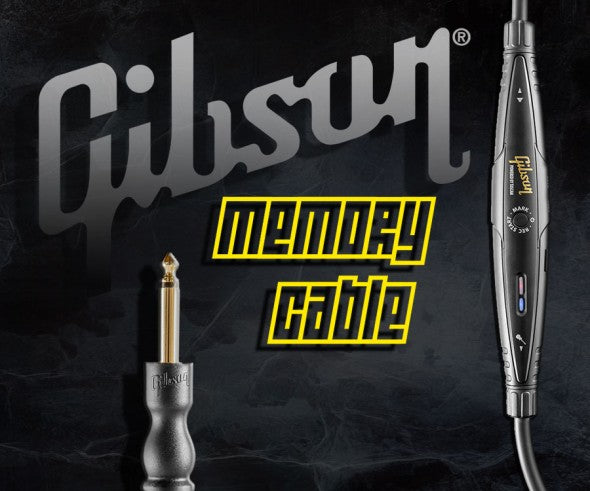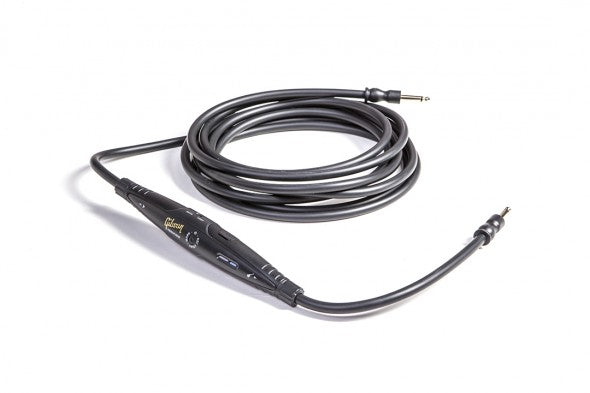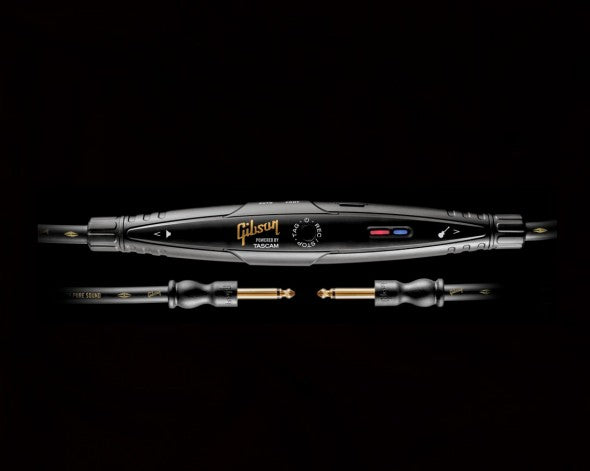The Revolutionary Gibson Memory Cable

Inspiration can be a fleeting thing. Case in point: you’re playing away in that creative “zone” that even the most devout yogis rarely visit, and you hit upon a brilliant riff, chord progression, number-one-with-a-bullet melody. It’s so good, you say, there’s absolutely no way you’ll forget it, but inevitably…cue the wah-wah trombones! As quickly as that magical idea arrived, it vanished into thin air, never to be documented for posterity or mass consumption. So, now you’re walking around saying “Damn, why didn’t I record that?” and kicking the sidewalk.
If this sounds like you, Gibson has a great new product. It’s called the Memory Cable, and at its essence is a digital audio recorder that captures CD-quality (44.1 kHz/16-bit resolution) sonic detail and saves the signal onto a 4 gigabyte Micro SD card (the recorder is powered by two AA batteries that last up to 8 hours). All fine and good, but the novel aspect of this recorder is that it’s installed—pretty discretely– within a 16-foot premium-quality, quarter-inch cable—the kind you use to plug your instrument into an amp or DI box or whatever. Imagine the convenience: you’re playing away, lightning strikes with a brilliant musical moment, and you record that moment by pressing the “Record” button on your guitar cable. The memory lapse crisis is averted and it’s as simple as that. Gone are the days when you had to race across the room, tripping over Chinese food containers, to hit darned “Record” button on the darned recorder; well, that button is now at your fingertips.
With the Micro Cable You can document up to 13 hours of digital audio onto the 4-gig card, and hear the contents on any device that can accept a Micro SD card (including many smartphones). Although you can’t play back what you’ve recording through your amp, you can upload the contents onto a computer and even build a song around your idea; you won’t worry about sound quality as the signal has been recorded in pristine, digital audio (with circuitry designed in collaboration with TASCAM). Users can record continuously—like letting the tape roll—or set the recorder to “Auto” mode, during which recording happens only when the recorder detects a signal. You can mark each performance as a separate file by “tagging” it via the record button.
You might be wondering if you really need to connect the Memory Cable to an amp, and you’re correct if you realized that you didn’t; you can indeed leave the cable plugged in to your instrument to take advantage of its recording ability. As an on-the-fly recording device for when you’re playing—whether on your own or with a band—the Memory Cable will be there to capture the moment. To see more info or to purchase the amazing Memory Cable on our site, just go here.















